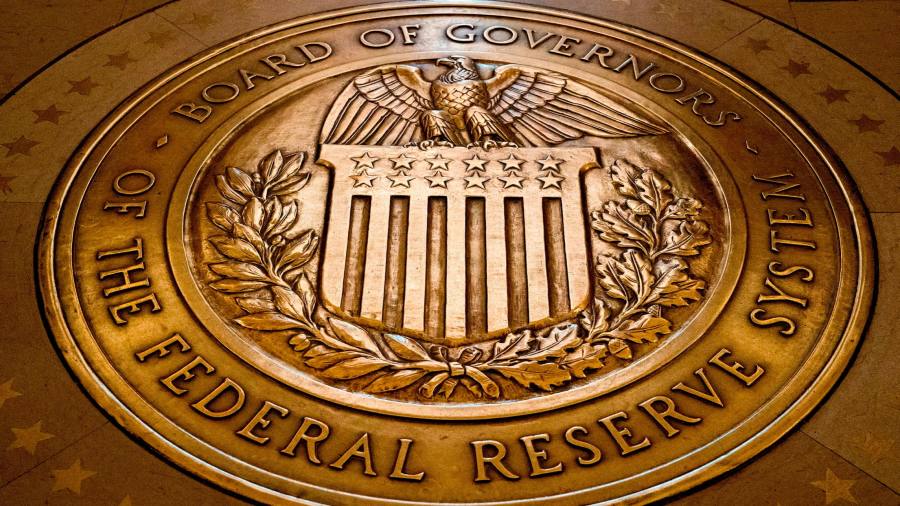The Federal Reserve has warned that the recent banking turmoil could fuel a broad credit crunch that risks slowing the US economy, while lenders told the central bank they plan to tighten lending standards due to worries about loan losses and deposit flight.
Two separate publications by the Fed on Monday highlighted mounting concerns that the March collapses of Silicon Valley Bank and Signature Bank and last week’s failure of First Republic will lead to pullbacks in lending and drive down asset prices.
The US central bank said in its twice-yearly financial stability report that despite “decisive actions” by regulators and officials to tackle the recent regional bank crises, worries about the “economic outlook, credit quality, and funding liquidity” could lead “banks and other financial institutions to further contract the supply of credit to the economy”.
The Fed added: “A sharp contraction in the availability of credit would drive up the cost of funding for businesses and households, potentially resulting in a slowdown in economic activity.”
The chance of a credit crunch was cited among the biggest current risks to the financial system, rather than the Fed’s most likely scenario. But it reflected anxiety about the macroeconomic impact of one of the most tumultuous months in American finance since the global financial crisis of 2008.
“The credit crunch, or at least the credit squeeze, is beginning,” Austan Goolsbee, president of the Federal Reserve Bank of Chicago, told Yahoo Finance on Monday. “I think you have to say that recession is a possibility.”
Fears of a credit contraction come as a possible US debt default looms with the White House and Congress at an impasse over increasing the government’s $31.4tn borrowing limit. A deal needs to be reached by early June in order to avoid what Treasury secretary Janet Yellen warned would be a “catastrophe” for the economy and markets.
As part of its stability report, the Fed surveyed market professionals and academics. The share who ranked banking sector stress as the top stability risk has quadrupled since the autumn, now ranking on par with inflation and US-China tensions. Worries about commercial and residential real estate are also rising fast, that survey found.
The Fed on Monday also released the results of its quarterly Senior Loan Officer Opinion Survey, which found that banks expect to tighten lending standards in the rest of 2023. The bank officers pointed to concerns about a recession and deposit withdrawals in the wake of SVB’s collapse.
The largest banks, those with at least $250bn in assets, blamed the potential lending slowdown on an uncertain economic outlook, according to the loan survey data.
“In comparison to the largest banks, midsized [with between $50bn and $250bn in assets] and other banks more frequently cited concerns regarding their liquidity positions, deposit outflows and funding costs as reasons for tightening,” the Fed said of the survey.
In a bid to retain depositors, some banks have had to offer better yields on savings accounts, weighing on profit margins. Mid-sized banks, which have faced the biggest deposit outflows, also flagged fears of stricter regulations and potential changes to accounting rules.
In terms of how a possible credit crunch could spill over more broadly, the Fed’s financial stability report said there was a danger of a decline in profits and rising defaults among businesses. “Additionally, an associated reduction in investor risk appetite could lead to significant declines in asset prices.”
The Fed also warned of weaknesses in the commercial real estate sector, saying “the magnitude of a correction in property values could be sizeable and therefore could lead to credit losses by holders of CRE debt”.
The central bank said it would also be monitoring the performance of commercial estate loans more closely and expanding “examination procedures” for banks with greater concentration in the sector.
On the less concerning side, the Fed said “shocks are less likely to propagate to the financial system through the household sector because household borrowing is moderate relative to income, and the majority of household debt is owed by those with higher credit scores”.
Even as it warned that lending could suffer, the Fed said most banks seemed able to handle tighter monetary policy.
“Notwithstanding the banking stress in March, high levels of capital and moderate interest rate risk exposures mean that a large majority of banks are resilient to potential strains from higher interest rates. As of the fourth quarter of 2022, banks in the aggregate were well capitalised, especially US global systemically important banks.”
Additional reporting by Stephen Gandel in New York and Colby Smith in Washington
Read the full article here
